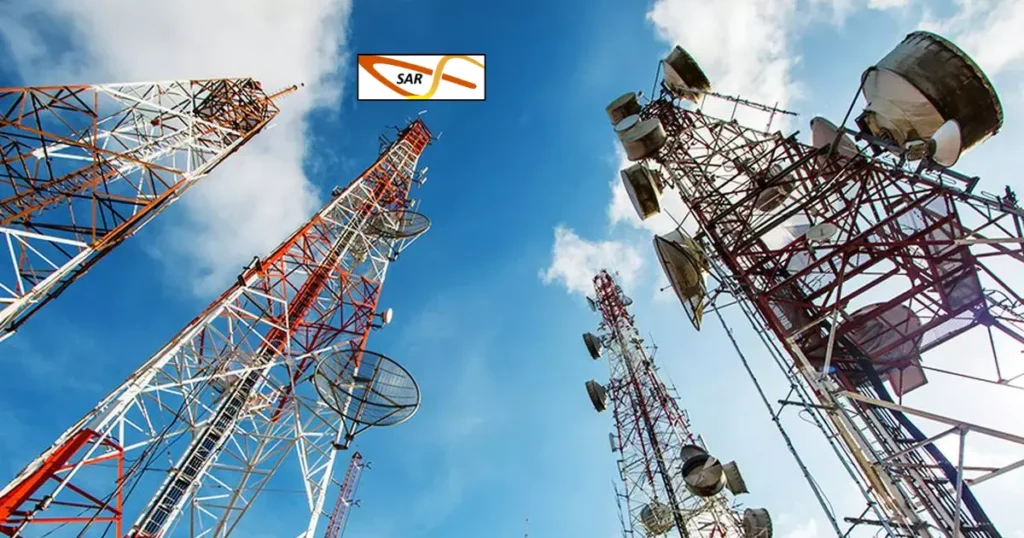SAR Televenture IPO Allotment Status Online: SAR Televenture IPO is Open on 22 July, 2024 and Close on 24 July, 2024. SAR Televenture IPO to Raise 7,142,857 shares (Approx ₹150.00 Cr) via IPO. The Fresh Issue of 7,142,857 shares (Approx ₹150.00 Cr).
- The Retail Quota is 35%
- QIB is 50%
- NII is 15%
SAR Televenture IPO Basis of Allotment Status on 25 July, 2024. SAR Televenture IPO Refund Date is 26 July 2024 and SAR Televenture IPO Credit to Demat on 26 July 2024.
Also Read: SAR Televenture FPO Details, GMP Price, Date, Review
Table of Contents
ToggleSAR Televenture IPO Allotment Link Online
| Linktime | Linktime Allotment Link |
|---|---|
| Moneymintidea | IPO Allotment Status Link |
About –
SAR Televenture Private Limited Incorporated in 2013, Our Company was, interalia, set up with an object to provide telecommunication solutions to telecom network operators for the evolving telecom industry and laying of fibre cables. We are currently a telecommunication infrastructure provider, engaged primarily in the business of installing and commissioning telecom towers in India.
We have installed an aggregate 413 number of towers on lease over various areas in West Bengal, Bihar, Uttar Pradesh, Chandigarh, Odisha, Jharkhand, Himachal Pradesh, Punjab, and Andaman & Nicobar Islands. We also provide support services such as includes project management for laying of the duct and optic fibre cables, construction of basic transmission and telecom utilities, dark fiber leasing, optical fiber network construction, maintenance of duct and optic fibre and optical fibre project turnkey services to various, Telecom Network Operators & Broad Band Service Operators and ISPs.
With innovation as its foundation, India’s telecom tower sector has established a distinguished presence worldwide. India pioneered the concept of passive infrastructure sharing, which has since become a global standard. This shift in the business model has yielded significant benefits – from accelerated market expansion and quicker time-to-market tooperational and capital expenditure efficiencies, as well as the alleviation of capital expenditure burdens from telecom operators.
The robust fundamentals of the tower industry have facilitated the seamless entry and exit of market participants, a task that would have otherwise been daunting, given the substantial capital investments required for network deployment. We have entered in the business vertical of installing Fiber to the Home (FTTH), which is a broadband internet connection technology that uses optical fiber to deliver high speed broadband internet directly to households.
Business Operation Process for installation of towers
1. Site Selection: Our skilled management team who are professionally qualified and are experts to do the assessment of the project & ascertain the viability of the project based on various study. These assessments are based on variousfactors, which include the study of the technical and commercial conditions, geographic location ofthe project, surrounding factors and the degree of complexity in executing the project in such location, our current and projected workload, the likelihood of additional work, availability of manpower, the project cost, local level factors and profitability estimates.
After conducting assessments, our research team obtains the approval of the management and carry the assessment of suitable locations for the purpose of tower installation. Their research for site location is based on factorssuch as coverage requirements, population density, existing infrastructure, local factors, and regulatory considerations. As a protocol and practice, our Company ensure that towers are not installed within 100-meter radius of educational institutions or medical institutions.
2. Obtain Permits and Approvals: As we are holding IP1 license which permit us to carry infrastructure telecom work. We do not require to obtain the permits, licenses, and approvals from local authorities, including zoning permits, environmental clearances and building permits. We need to enter into an agreement with the owner of the property. This step is very imperative in respect of compliance perspective for the purpose of ensuring that we have all the approvals for the setting up of tower.
3. Engineering and Design: Once we obtain the permission & approval form various authorities or regulators, our team of engineers consist of structural engineers, radio frequency engineers, and telecommunication experts do the handhold work to design the tower structure, considering load-bearing capacity, height requirements, wind resistance, and equipment placement and other external factors. Our team also take special care for detailed drawing of a tower’s foundation and design specifications.
An engineer’s certificate of structural stability showing the towers’ height is required. While designing the tower, our engineer team give focus on that mobile tower’s weight should not be a problem for the structure itself and that it should not create any hindrance and obstacle to the structure in any manner whatsoever.
4. Site Preparation: Site plan displaying the whole plot’s size and the number and height of buildings on the plot. After that we need to prepare the construction site by clearing any vegetation, levelling the ground, and ensuring proper drainage. Arrange for electricity and fiber optic connectivity, which are crucial for powering and connecting the equipment. There are two types of sites: i. Cell Tower Site- which physical structures that are designed to support one or more cell sites; and ii. Rooftop Site- with a rooftop system, the antenna and transmission equipment are installed on a building’s roof.
The equipment is connected to utility power at the site and the backhaul fiber connection is brought up from the main telephone demarcation point in the building. Sometimes, building owners will lease their rooftops to wireless carriers if the building is in an optimal locationfor a cell site.
All equipment (antenna, building and ground) used to transmit cell signals to and from the mobile device back to the receiver. Typically includes transmitter/receivers, GPS, backup power sources, Base TransceiverStation (BTS), backhaul connections, and more.
5. Foundation Construction: As we are engaged in the roof tower installation, civil work for foundation construction does play a minor butsignificant role in the whole process. Excavate the ground and construct a stable foundation for the tower. This typically involves pouring concrete footings or using specialized foundation designs based on the soil conditions and tower specifications. The entire installation of the tower is undertaken by the Company itself through its technicians, however, we outsource only civil work to contractors.
6. Tower Erection: Our experts work diligently and efficiently in order to comprehend the exact demands and requirements of Telecom Service Provider (TSP). Moreover, network, operator standards are followed to ensure high qualityerection work. We assure timely completion of erection work projects based on the expertise in the subject that we carry. Towers shall be erected by on the foundations not less than 30 days after concreting and after such time that the concrete has acquired its full strength.
care shall be taken to see that thejointing surfaces are clean and free from dirt or grit and if necessary, zinc rich point shall be applied for strength and durability. The tower erection shall be done in strict accordance with the approved drawings. If the stubs of super structures after the erection are found to differ from approved drawing or to be put off alignment, the tower shall be dismantled and re-erected. Considering the same, this process is very important and involves a high level of precision.
7. Equipment Installation: Next step includes installing and setting up the necessary equipment on the tower like new radios, antenna, radio transmitters, receivers, and signal processing units, connecting all the fiber and coax cables, connecting power to the cellsite and others. Position the equipment at optimal heights and angles to maximize coverage and minimize interference.
Considering that the equipment needs power, we need a constant power system. Since the power systems can and will fail occasionally, we also need backup power, which usually means a battery system with inverter.
8. Connectivity Setup: Establish the necessary connectivity between the tower and the core network. This includes connecting the tower to the fiber optic network for high-speed data transfer and configuring network switches, routers, and other networking equipment. The antennas receive radio waves from different devices on different bands, depending on network generation used. Towers are usually connected to a data center via underground cables. That allows it to send and receive data to and from the data center.
9. Testing and Commissioning: Conduct thorough testing of the tower and associated equipment to ensure proper functioning and adherenceto performance standards. Verify network connectivity, signal strength, and overall system performance. Totest a cellular data network, towers and DAS require specific testing methods such as PIM testing, cable & antenna analysis and carrier-approved cell fiber tests. Towers will also require antenna alignment to direct signals to other towers.
10. Integration and Optimization: Integrate the tower into the existing telecommunication infrastructure, ensuring seamless handover and connectivity between neighbouring towers. Optimize the network settings and configurations for optimal performance and coverage. By using digital and intelligent methods, data flows are streamlined, and workflows are optimized to automate and speed up mobile network construction. This supports the sustainable development of carriers’ services.
































